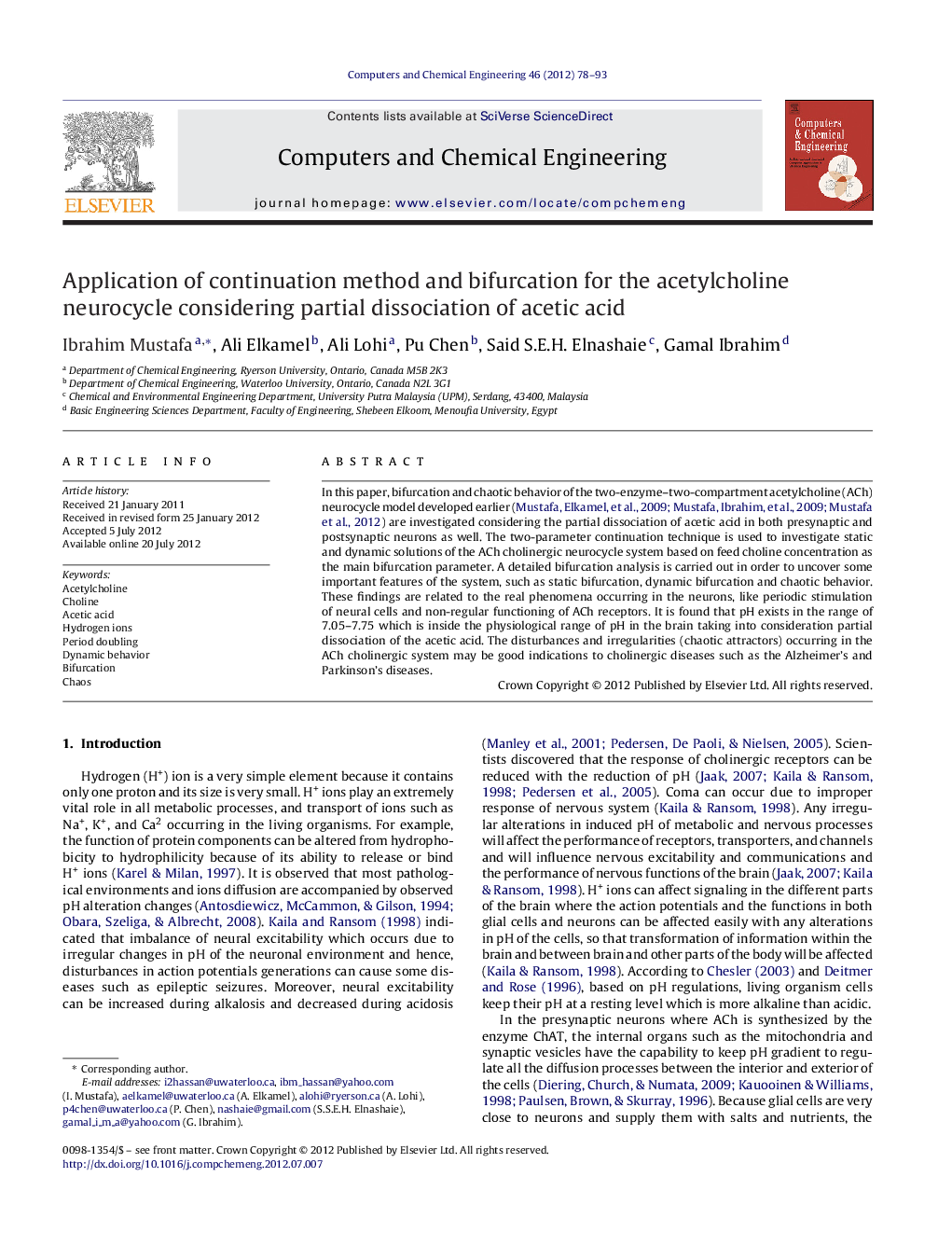| Article ID | Journal | Published Year | Pages | File Type |
|---|---|---|---|---|
| 172787 | Computers & Chemical Engineering | 2012 | 16 Pages |
In this paper, bifurcation and chaotic behavior of the two-enzyme–two-compartment acetylcholine (ACh) neurocycle model developed earlier (Mustafa et al., 2009b, Mustafa et al., 2009a and Mustafa et al., 2012) are investigated considering the partial dissociation of acetic acid in both presynaptic and postsynaptic neurons as well. The two-parameter continuation technique is used to investigate static and dynamic solutions of the ACh cholinergic neurocycle system based on feed choline concentration as the main bifurcation parameter. A detailed bifurcation analysis is carried out in order to uncover some important features of the system, such as static bifurcation, dynamic bifurcation and chaotic behavior. These findings are related to the real phenomena occurring in the neurons, like periodic stimulation of neural cells and non-regular functioning of ACh receptors. It is found that pH exists in the range of 7.05–7.75 which is inside the physiological range of pH in the brain taking into consideration partial dissociation of the acetic acid. The disturbances and irregularities (chaotic attractors) occurring in the ACh cholinergic system may be good indications to cholinergic diseases such as the Alzheimer's and Parkinson's diseases.
► The effect of the partial dissociation of acetic acid on both presynaptic and postsynaptic neurons of the acetylcholine system is investigated. ► The two-parameter continuation technique is used to study static and dynamic solutions of the neurocycle. ► It is found that pH exists in the range of 7.05–7.75 which is inside the physiological range of pH in the brain taking into consideration partial dissociation of the acetic acid.
